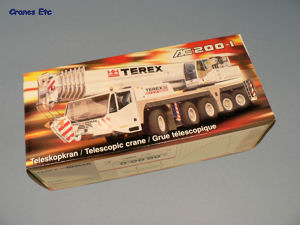 | | Terex Demag picture box. | 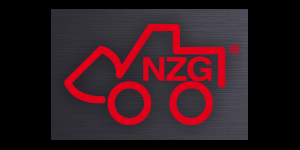 | 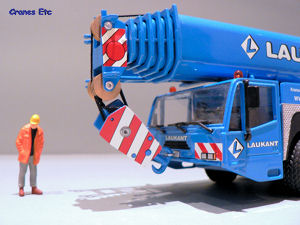 | | 'The hook is as big as I am!' | 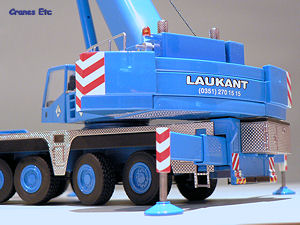 | | Rear view with the full counterweight on. | 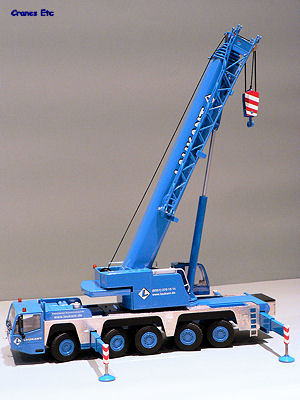 | | Shown here without the full counterweight. The fly jib stays on when the boom is at an angle - just. | 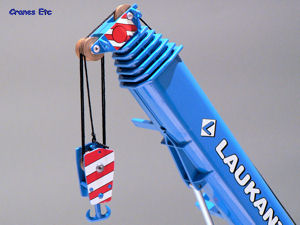 | | Brass pulleys at the boom head. |
| The AC 200-1 is a nominal 200t capacity five axle crane (also available in six axle configuration in some countries) from the Demag stable. For photos of the real machine click here.
The review model was painted in 'Laukant' livery.
Packaging
The packaging for this model consists of a good quality outer sleeve with pictures and technical details on the cover, which contains a two piece polystyrene box containing the model. The polystyrene halves have finger notches to enable easy removal from the sleeve and are marked top and bottom as well as having the model name. Inside, the model is carefully wrapped. No instructions are provided.
The review model arrived with one windscreen wiper detached but this was easily refixed.
NZG also provide a pair of cotton-type gloves with the model to prevent finger marks on the model - a nice acknowledgement to the collector.
Detail
The model looks very good. Starting with the carrier, the wheels are well detailed as is the rest of the carrier body. The driving cab has windscreen wipers, mirrors and orange beacons. The mirrors come already fixed rather than the normal practice of having them provided separately for fixing. Lights are painted on. Cab interior details are simple, and there is a fine loop at the front of the crane for attaching the hook during transport.
Location points are provided on the carrier body for loading the counterweight during erection, but there is a problem with these which will be described later.
The crane body detail is also good with wipers on the cab and excellent handrail and stepping details. The hook block is very good and in keeping with the size of the crane. The pulleys are brass although this is a one-piece block and as the pulleys in the boom are also one-piece (the pulleys are not individually separate) unwinding the rope is not smooth. The hook rotates from the block and this adds to the realism.
The main boom is in seven sections and it is made very well. A folding fly jib is provided and has well formed latticework.
Features
The front and rear pairs of axles steer. Each pair is linked together and they steer well in tandem so most of the steering modes of the real crane can be replicated.
The outriggers are very good. They each have two stage outrigger beams with a robust screw and excellent painted metal pads. The crane cab can be tilted.
The boom cylinder has been drilled with a hole so that it can be pinned when erect to prevent boom sag. Thoughtfully the hole is in the plane of the boom so it is not visible for most practical purposes. The boom itself is a seven section telescope and works well. At the boom head the folding fly jib can be attached by pins and this is straightforward to do.
The winch is operated using one of the tools NZG provide for the purpose which works well and avoids spoiling the look with a winding handle.
The main counterweight is attached to the crane body by a pair of screws. When attached the overall effect is good, and the crane can rotate fully without a problem. However if the counterweight is removed and rested on the carrier using the locating lugs then the crane body cannot rotate as it is fouled by the counterweight. This appears to be scaling problem and in reality is of little practical consequence because it does not prevent the crane being posed in almost every possible way. When in transport mode the model still has one counterweight plate permanently attached. Whilst this seems alright, this is different to the photograph on the box and it is not clear why this plate is permanently screwed to the underside of the winch housing rather than forming part of the separable counterweight.
Quality
The paint finish is very high quality as are the graphics. Most parts are metal including the outrigger beams. The moving parts all work well. The model gives a very good impression because of its detail, finish and weight.
Price
The model is good value for a five axle crane, even in the special livery versions.
Overall
This model is very good overall and looks good in a variety of poses. It would be better still if the counterweight could be split further, and if a luffing jib attachment was available.
Footnotes
The model first appeared at the Nuremberg Toy Fair in 2003. In 2004 the first of the different liveries was shown at the Toyfair; 'Laukant' (blue) and 'Scholpp' (red). Versions have been produced in 'Mammoet' and 'All Crane' liveries. In March 2006 versions appeared in 'Blansjaar' (red), 'Nederhoff' (yellow) and 'Convoi' (yellow and blue) colours. In July 2006 a version appeared in lime green 'Kynningsrud' livery. In October 2006 a version appeared in yellow 'Wiesbauer' colours. A revised version was announced at the Nuremberg Toy Fair in February 2008 as model number 730.
|
| |
| 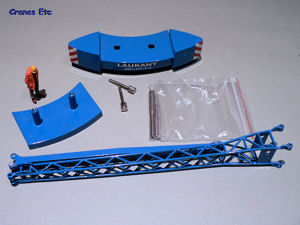 | | The various parts out of the box. | 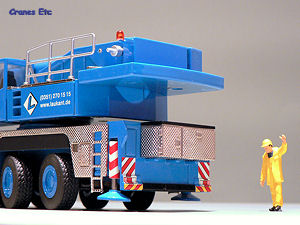 | | Rear view of crane in travelling configuration. | 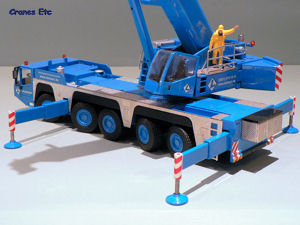 | | Tilting operator's cab.. | 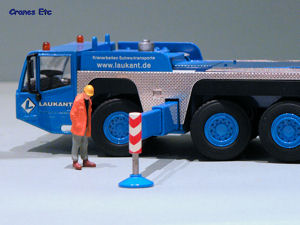 | | Outrigger beams and pads are metal. | 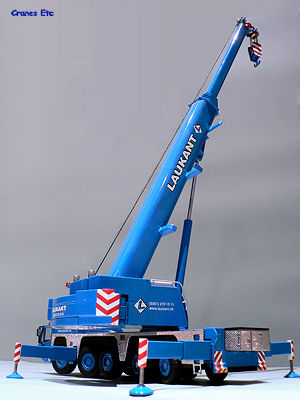 | | Just one section of telescope extended. |
|

